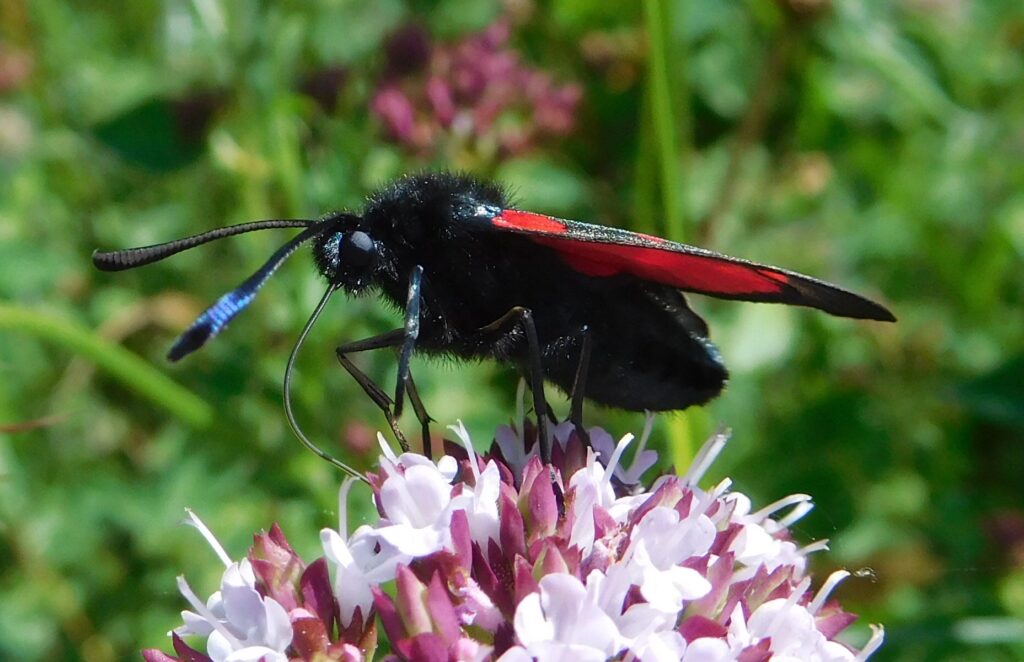
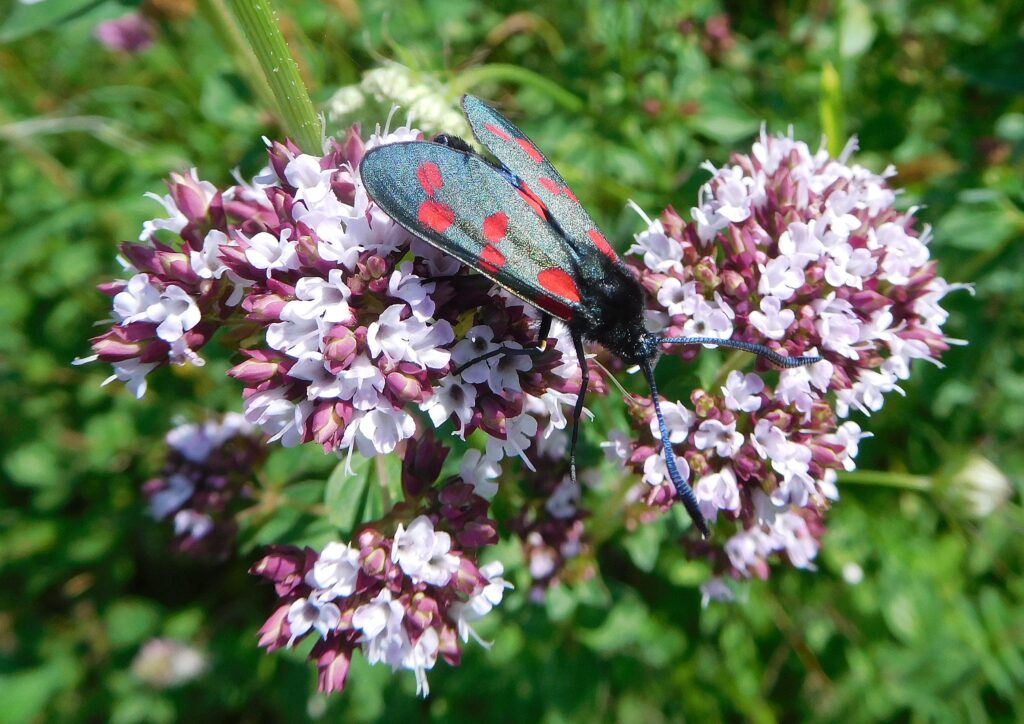
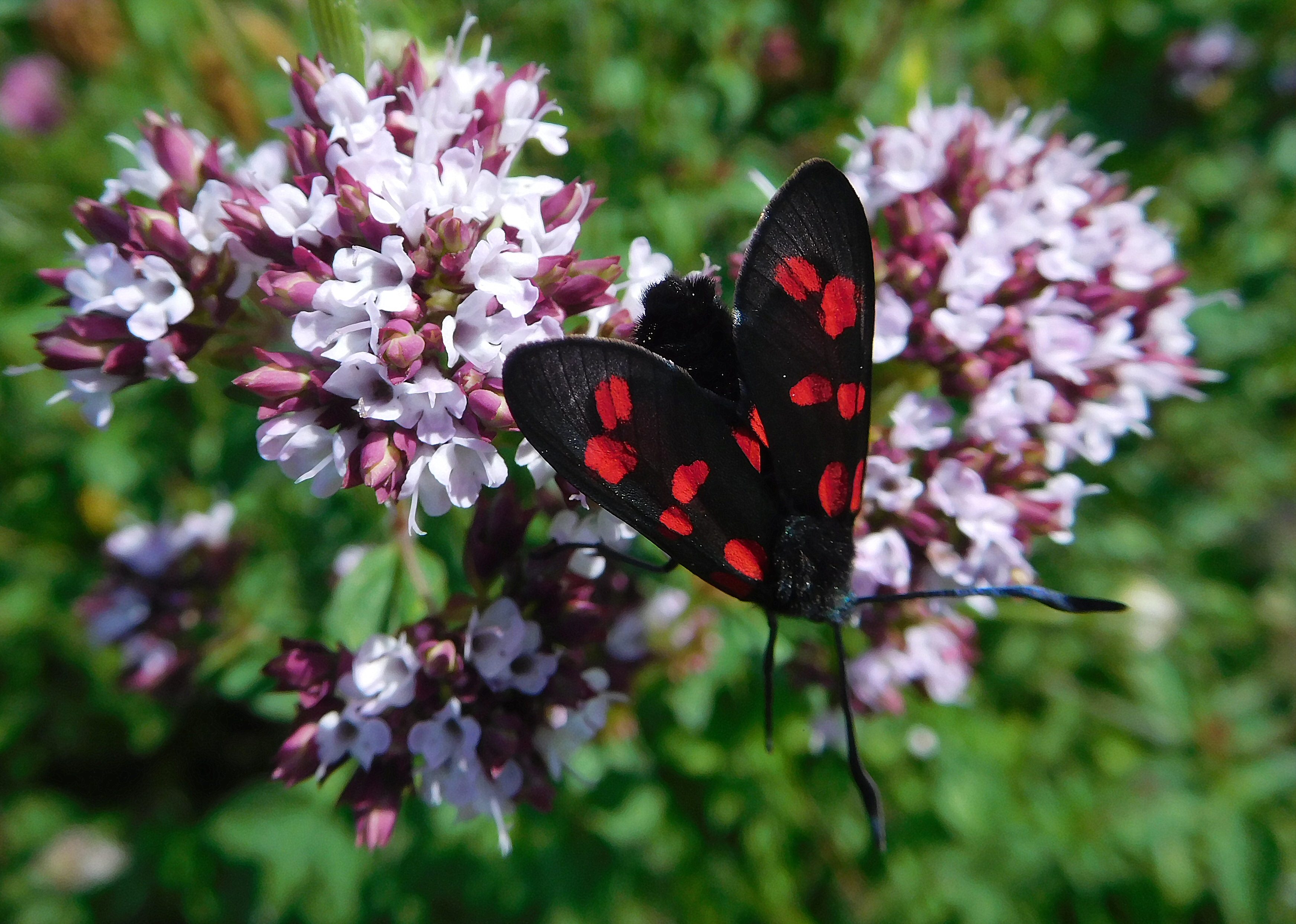
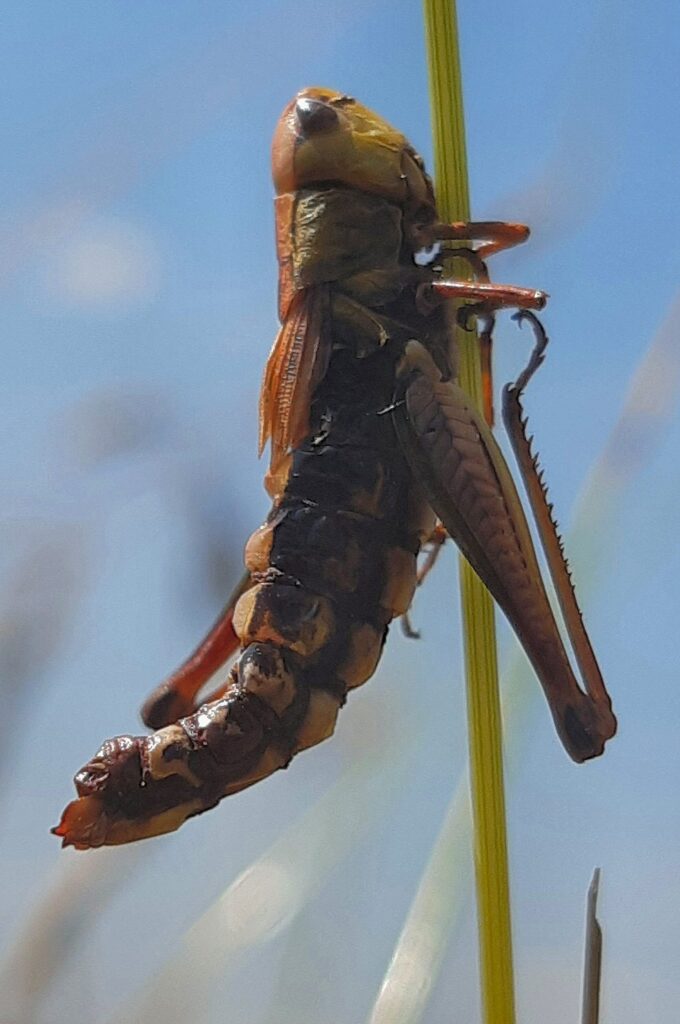
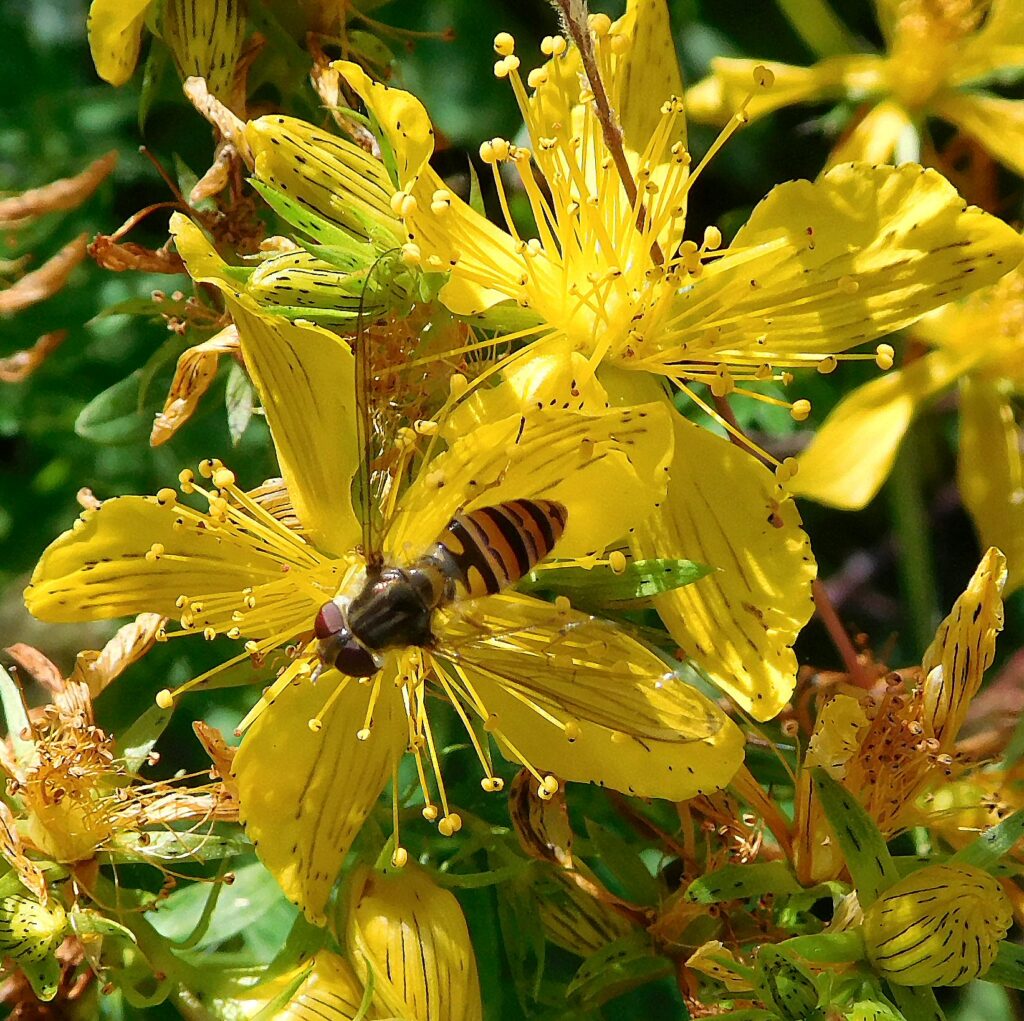
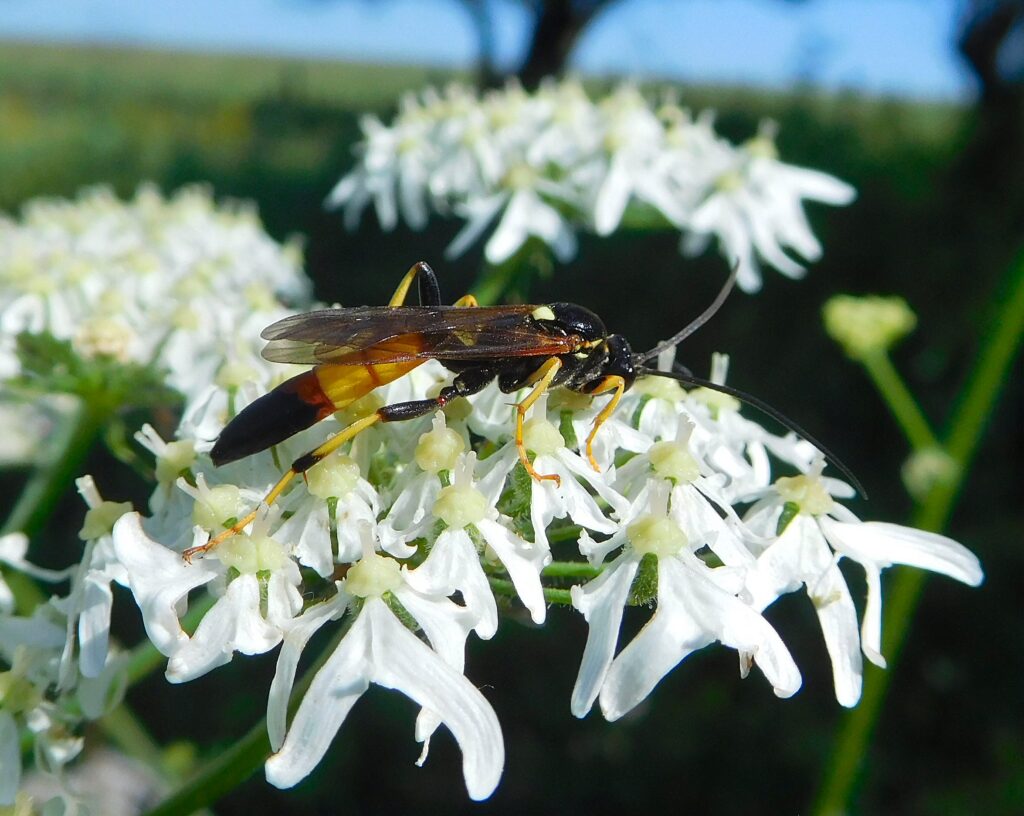
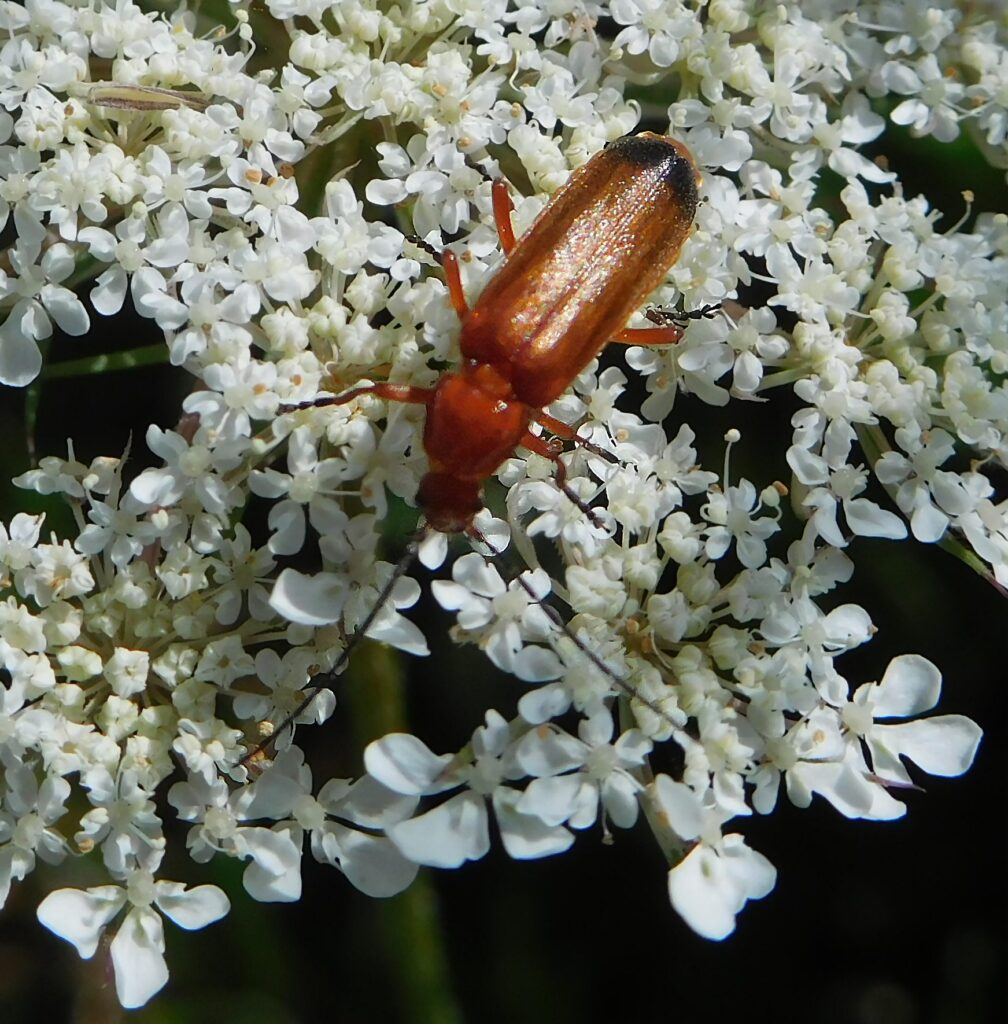
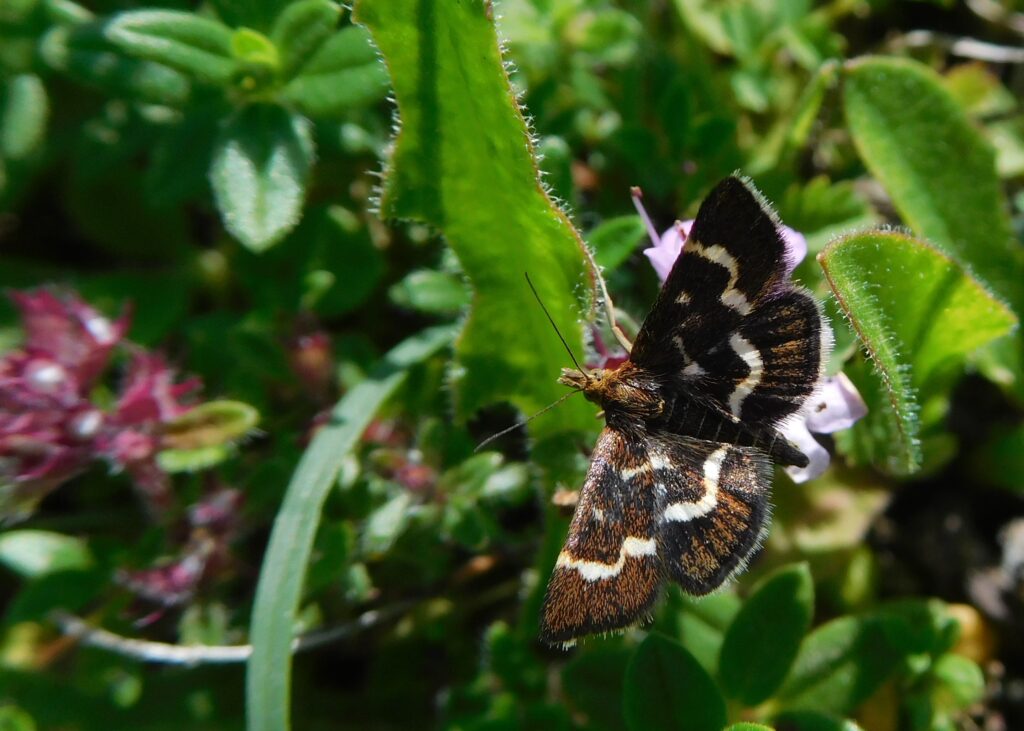
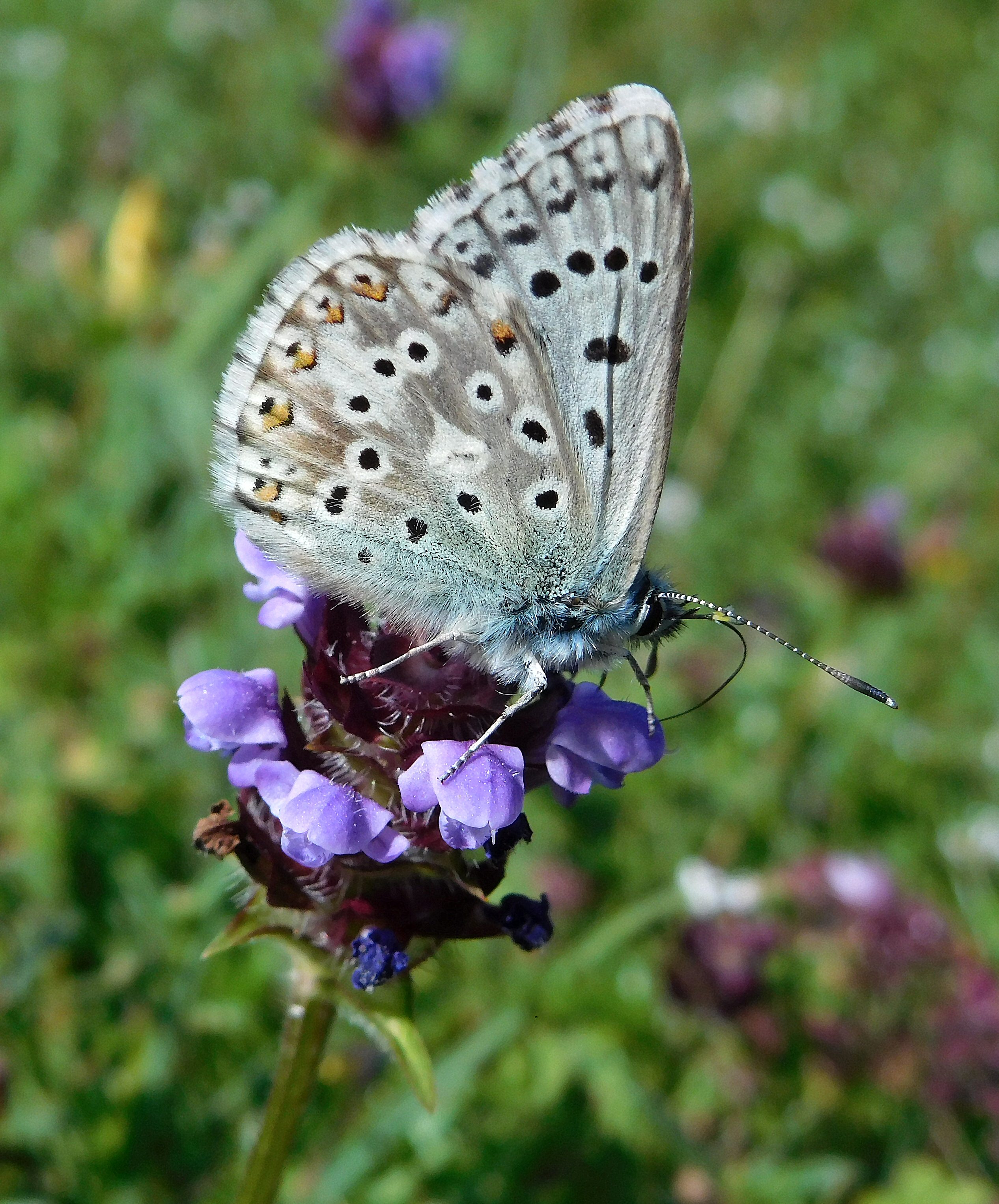
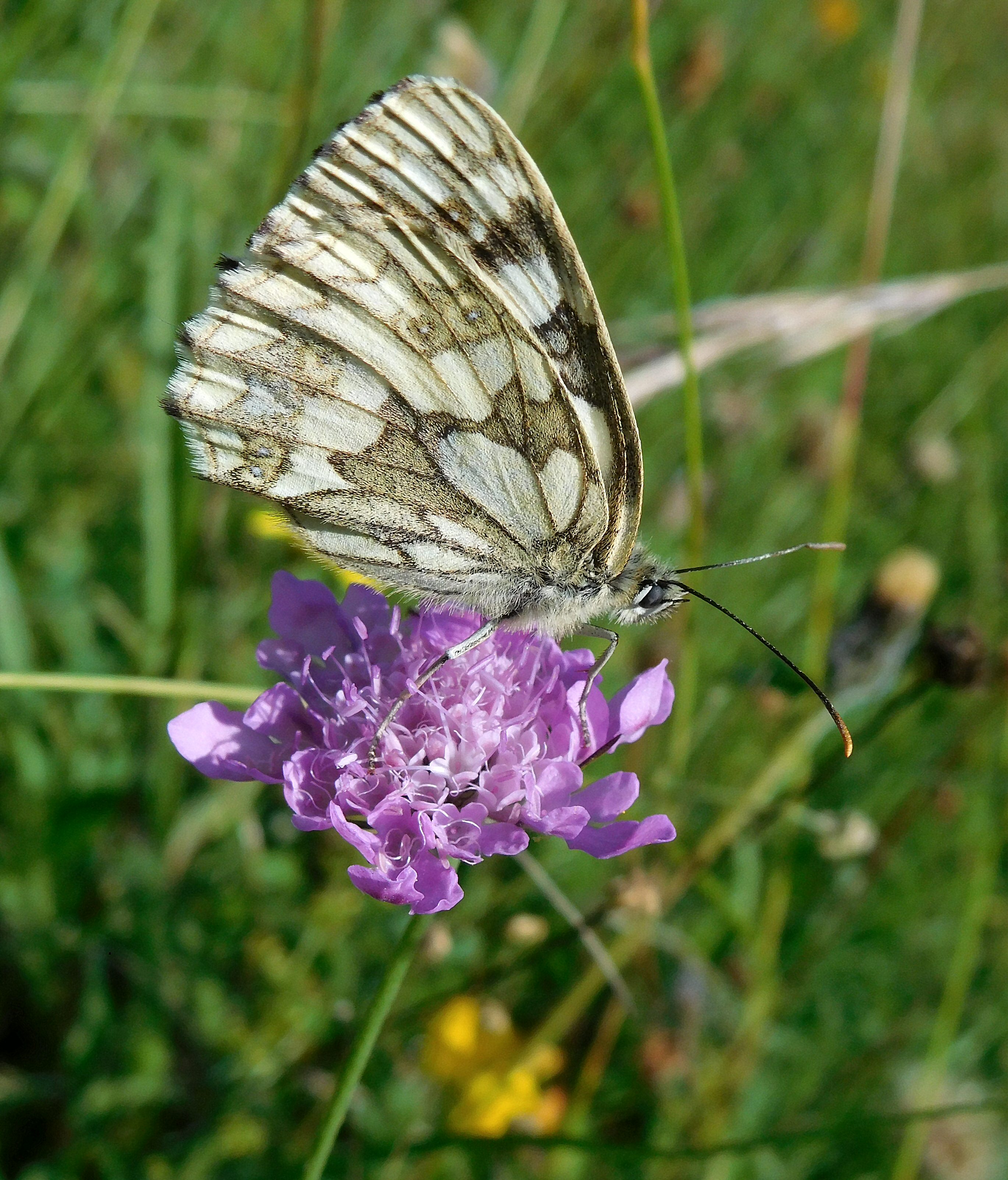
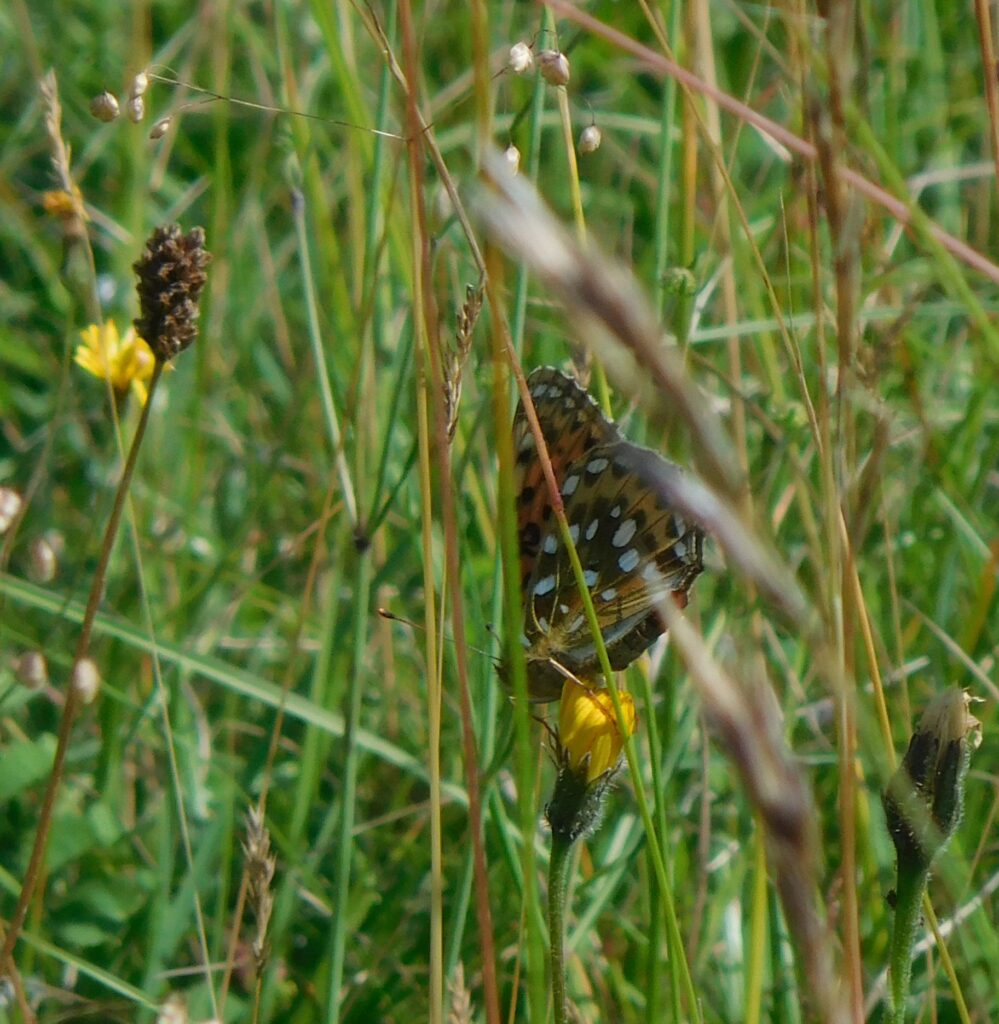
There were also Small Whites, Meadow Browns, Gatekeepers, Small Skippers, and possibly Chalkhill Blues about.
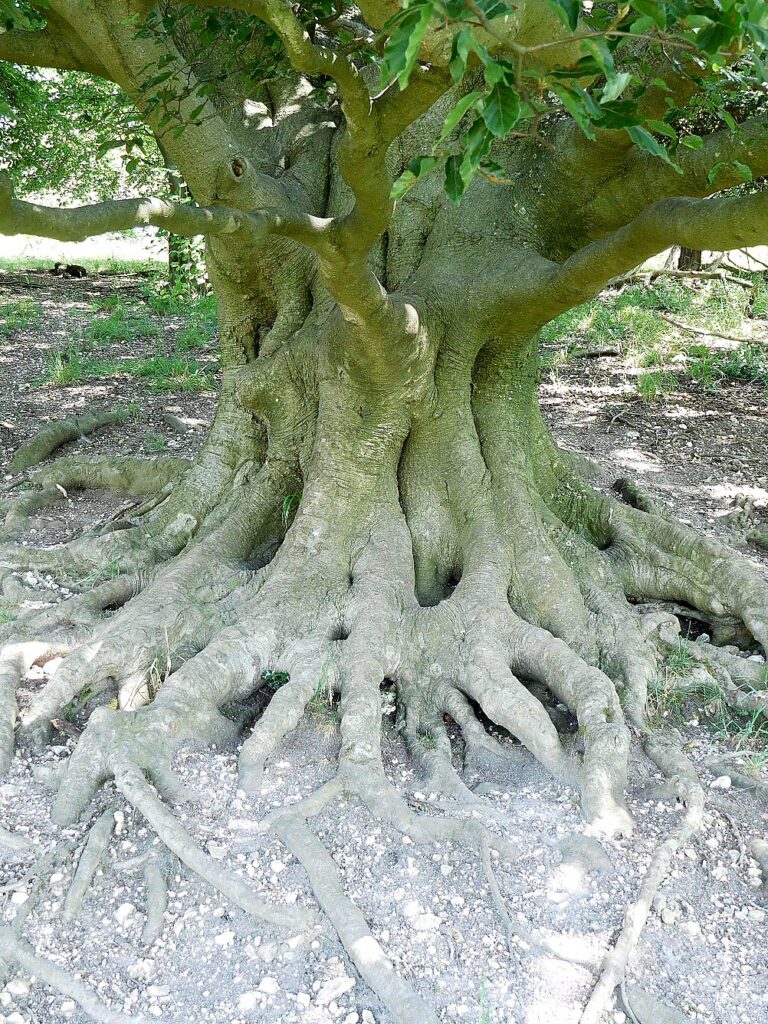
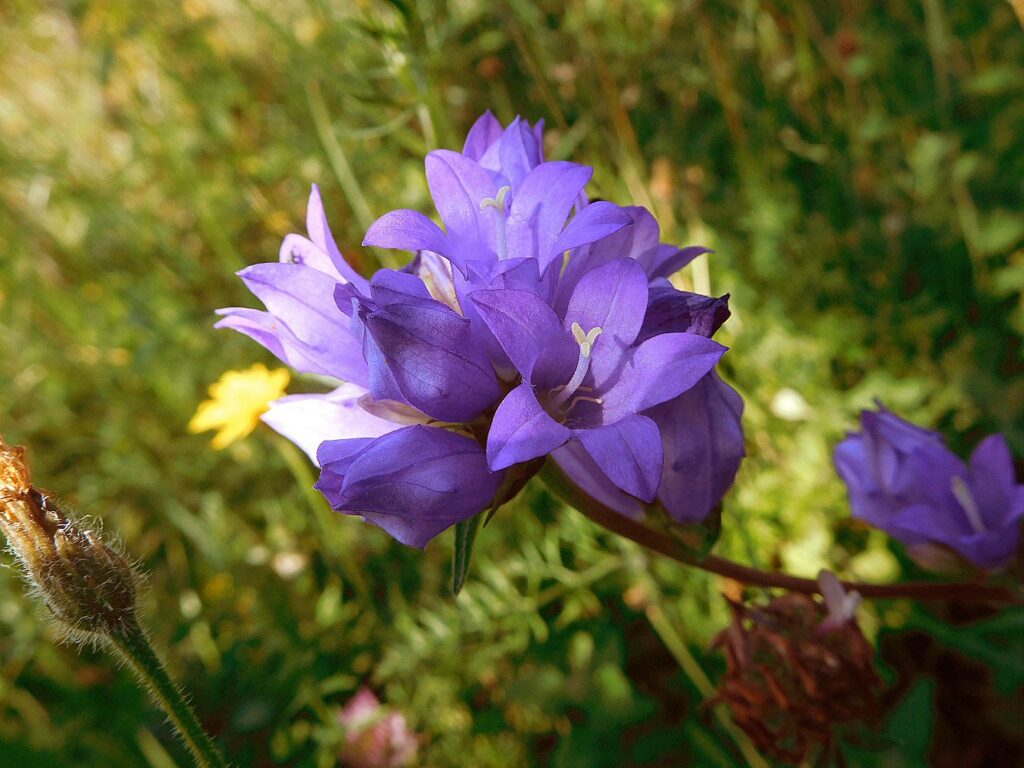











There were also Small Whites, Meadow Browns, Gatekeepers, Small Skippers, and possibly Chalkhill Blues about.


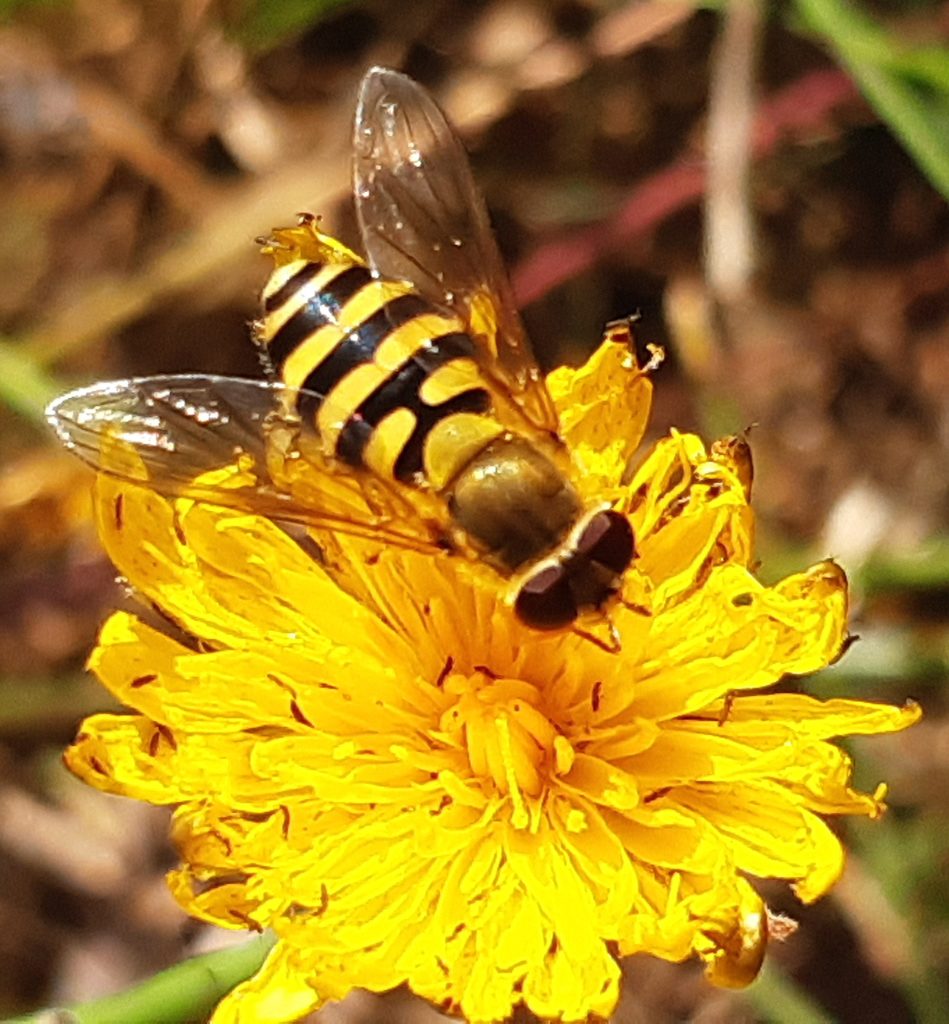
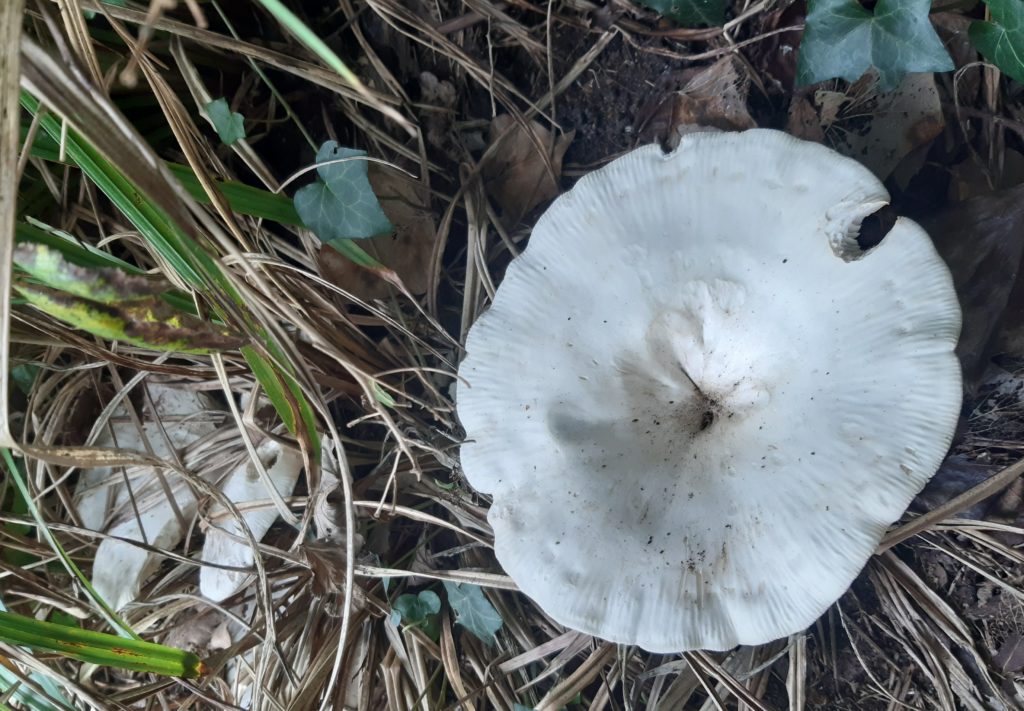
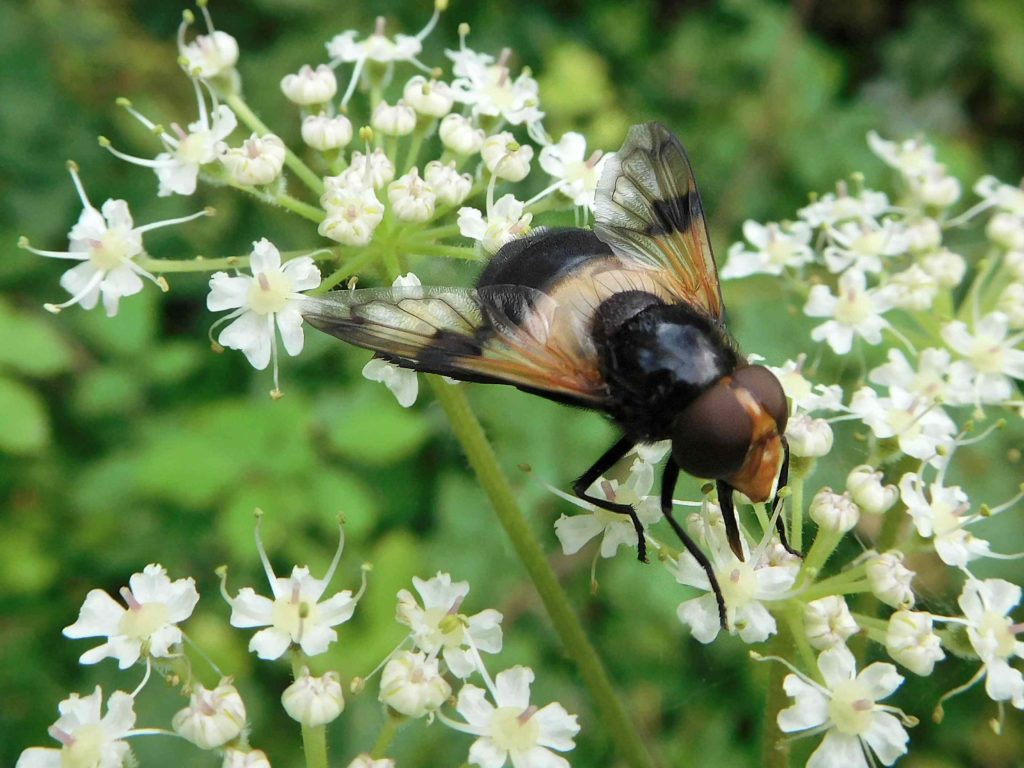
For a moment I glimpsed the brilliant indigo of a Banded Demoiselle (Calopteryx splendens), just near Gunnersbury Triangle’s picnic meadow. It was the very first sighting of that species in the reserve: a bit surprising, as it’s a species of slow-flowing rivers. It does occasionally frequent lakes, so perhaps there’s a population near the artificial waterfall over in Chiswick Business Park? I’d better go and have a look!
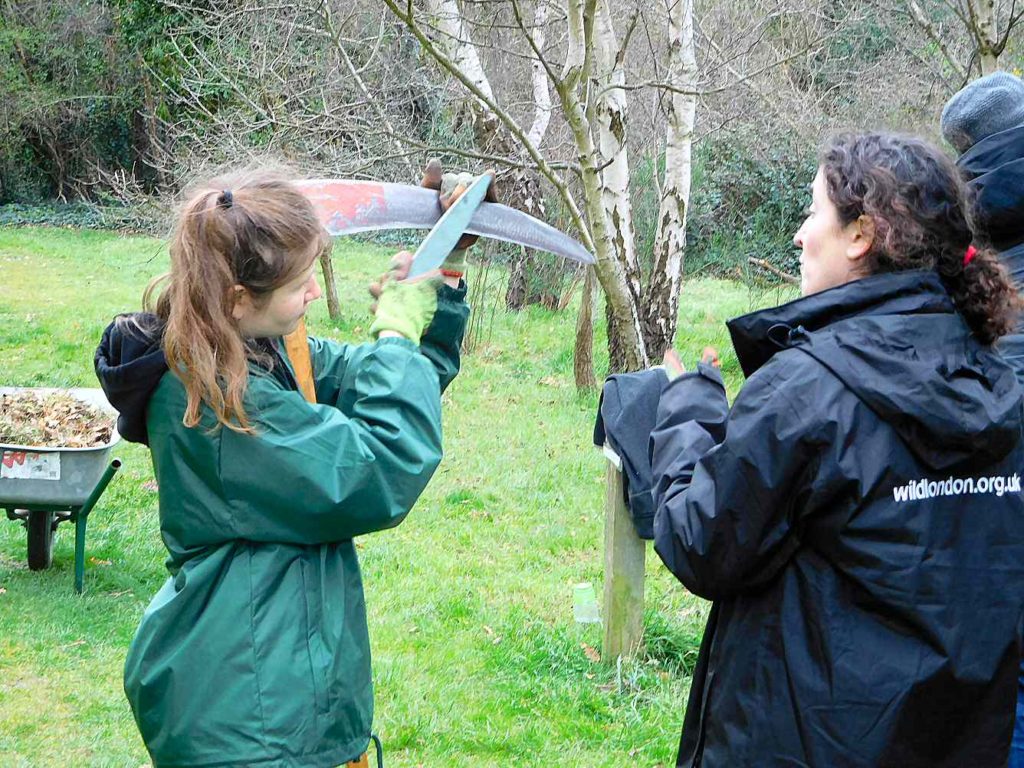
The first day of spring, and a Chiffchaff was singing down in the reserve. The hawthorn hedge, laid last year, is springing up into fresh green and thickening up nicely.
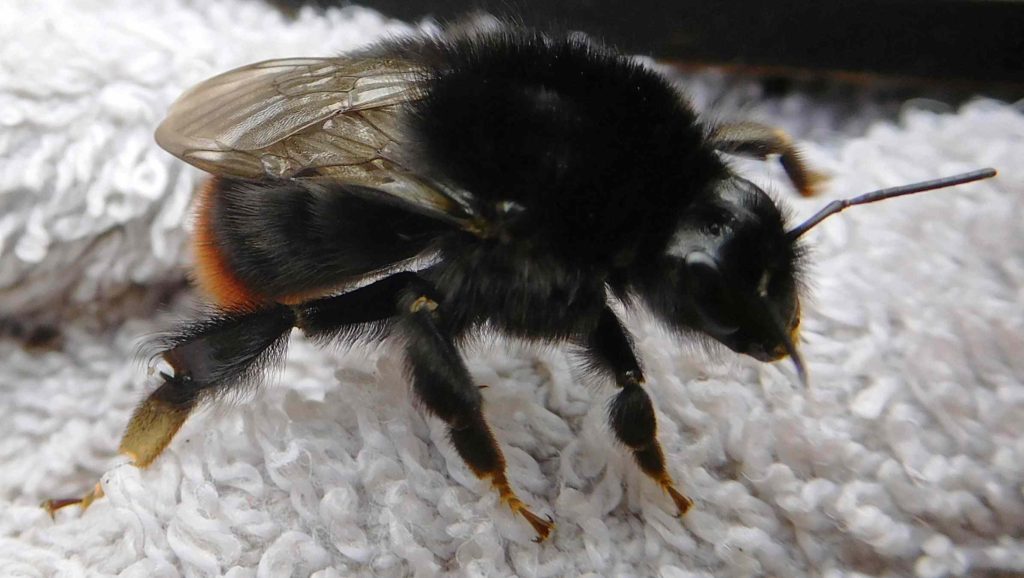
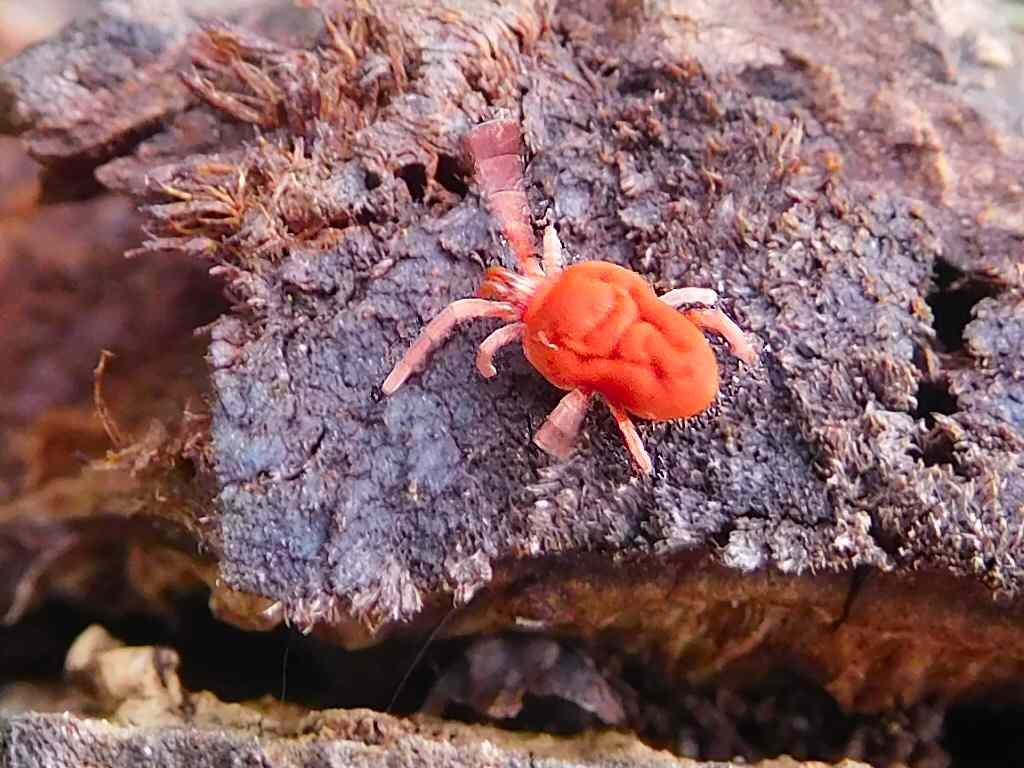
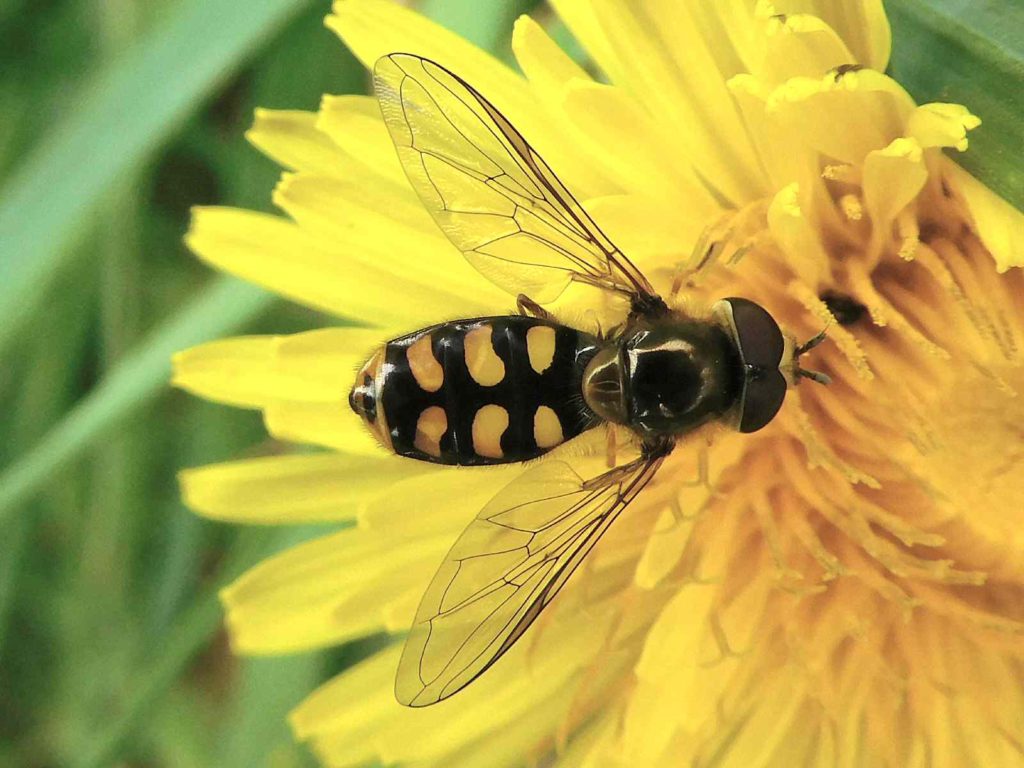
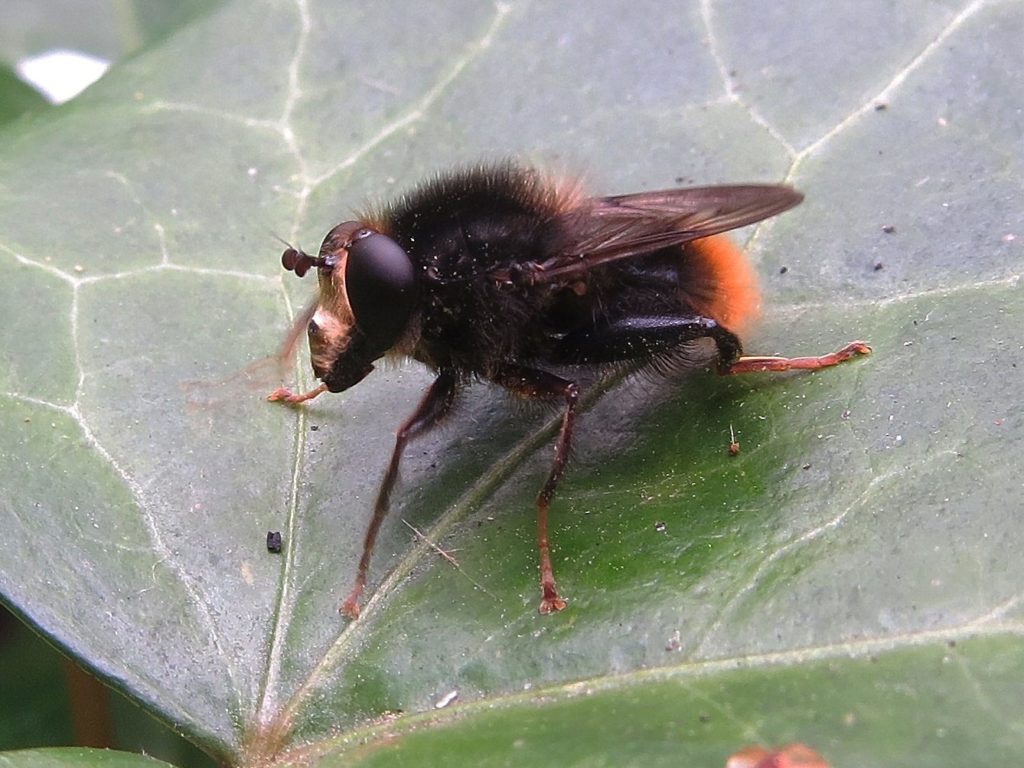
Well, at last it’s warm. The anticyclone is heating up the air nicely, a couple of degrees warmer each day. The air is buzzing with hoverflies, and luckily with Mike about, we can actually put names to them. This one, a really remarkable bumblebee mimic, is Criorhina ranunculi – nothing to do with buttercups (Ranunculus), but a species whose larvae live in rotting wood, and it does have an odd nose (rhino-). Quite an unusual species.
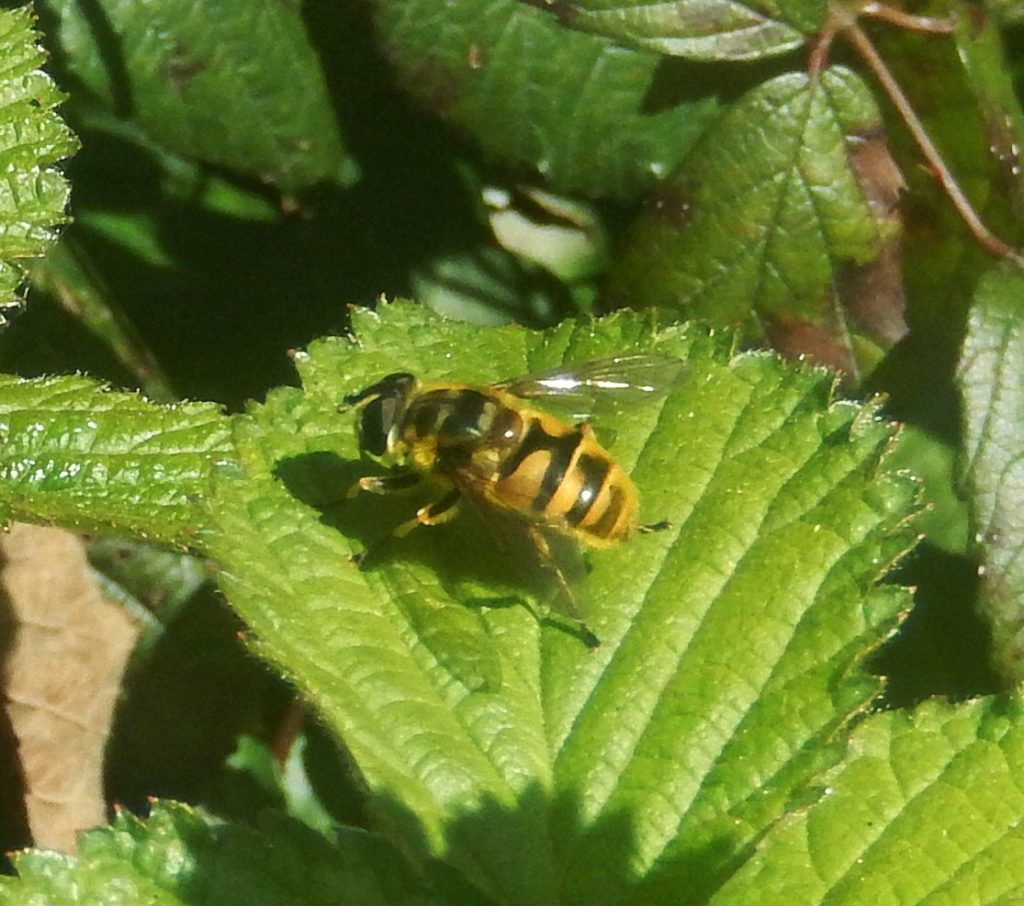
This one, Myothropa florea, is a much more typical hoverfly, mimicking a wasp. Mike says he’s recorded some 18 species in the Gunnersbury Triangle LNR.

This is a male Nomada cuckoo bee, a brood parasite of other bee species. Its jizz is quite wasp-like in flight, with a flash of aposematic yellow-striped abdomen looking distinctly worth avoiding. At rest, it looks much more like the bee that it is.
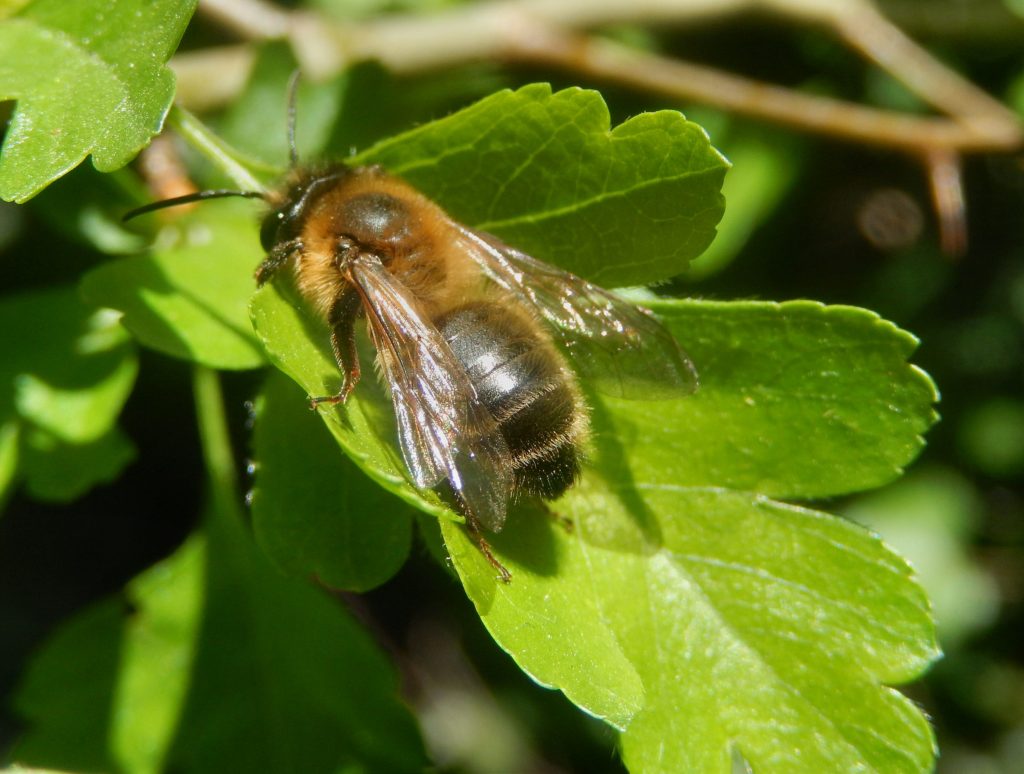
This honey-bee-like insect, in contrast, is obviously a bee, and not a parasite. If you’re used to honey-bees, you’ll notice it has a markedly short head, shorter than it is broad: all the Andrena genus are like this. The head can be short because the tongue is also short, the genus being adapted to short-tubed flowers, so evolution has economically saved energy on building a wastefully long head.
Down at the pond, the sun sparkled on the clear water; a newt or two lurked between the weeds; and dozens of tiny tadpoles wriggled in the shallows. The Mallard pair swam about just below us, greedily feeding. I hope they miss some of the tadpoles.
We hammered in a line of posts for the log hedge, to reduce the number of sticks finding their way into the pond. The ground was rather stony in places, and the iron bar came in handy to break through the stony layer first.
As we did the butterfly transect (Green-Veined White, Brimstone, Holly Blue, Speckled Wood, Large White), we saw a Sparrowhawk swoop into a tree, whistling to his mate. So it seems they’re nesting here again this year.
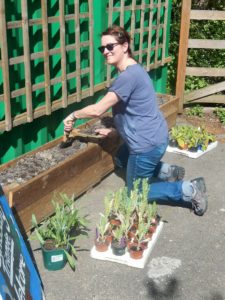
Back at the ranch, Jo was planting out some nice-looking small cornflowers, poppies, climbing nasturtiums and foxgloves raised by the Chiswick Horticultural & Allotments Society’s greenhouse team.
Two days later, the Swifts arrived in the skies over Chiswick, bringing their screaming flight calls to announce summer.
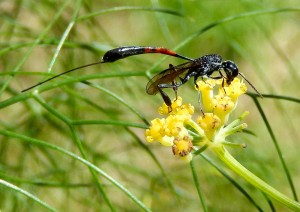
When you see a parasitic wasp, she – it’s always a she, as the males lack the long ‘sting’, which is an ovipositor – is generally flying about searching for caterpillars or other insect larvae. She can detect them deep inside plant stems, drills down to them with her extraordinary sting, and lays one egg in the body of the luckless grub.
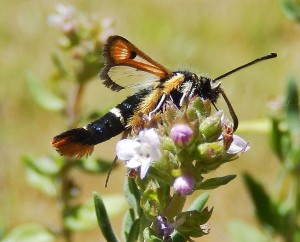
Clearwing moth larvae just eat plants, including currants, but the adults are spectacular. The clear patches on the wings are where the wing scales are programmed to fall off, leaving a bare membrane. Happily the wings and tail are gloriously coloured.
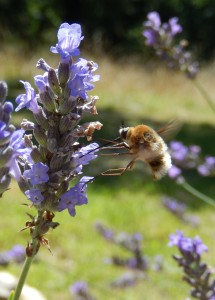
Proof that Bee-Flies cheat: those legs are resting on those flowers, however much those buzzing wings are hovering!
And to cap it all, a large, brilliant Green Lizard ran into the kitchen.
In the afternoon the temperature reached 31 degrees. We boldly went out onto the steep Chalk grassland hillside north of St Sulpice, where the Pyramidal and Chalk Fragrant Orchids flower in quantities in the springtime.
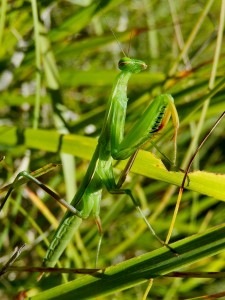
At least five Praying Mantises on the chalk grassland: they are widely distributed on flowery meadows (chalk or sandy clay doesn’t seem to matter) but appear never to be numerous, so this was a good haul.
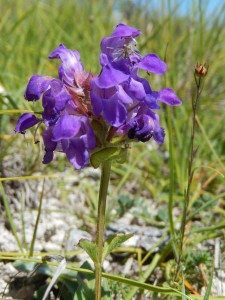
Zygaena fausta, a boldly marked and presumably aposematic Burnet Moth without any English name that I know of (we could call it the Devil’s Burnet), on Knapweed.
The sound of summer: a chorus of grasshoppers and crickets in the heat. This grasshopper was unusually large and obliging.
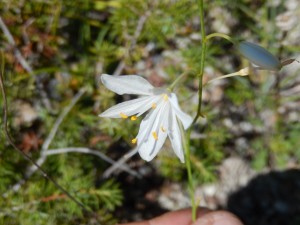
The hillside was carpeted thinly and gracefully by these slender white flowers; behind it are Juniper bushes and loose Chalk scree, a scene repeated all across the hill, interspersed with bright flowers (Milkwort, Scabious, Knapweed, as well as Eryngo and various yellow composites) and the dried-out fruiting stalks of Orchids of different species.
A brilliantly-coloured bug on a grass stem. Perhaps it is an early instar of the Sloe Bug, or a similar species.
At 11 pm, our headlights revealed a Roe hind and fawn on the grassy track. The hind looked at the car and decided reluctantly to move off to the right, into the long grass of the meadow. The fawn ran away down the track before branching off to the left, its usual haunt with the cover at woodland edge where it hides up during the day.
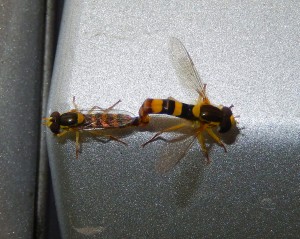
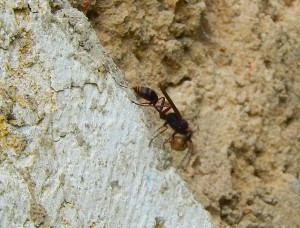
This large, long-waisted and rather dark wasp is quite a shy visitor to the Fennel. She buzzes noisily into cracks in the wall, and just this once (hence the fuzzy photo) I caught her carrying a lump of mud to do her building, so I assume she’s a Mason Wasp, species not known to me (help welcomed). She is about 20 mm long and stocks her mud nests with luckless grubs to feed her own larvae. There is a similar wasp of the same size and shape with yellow legs: not clear if this is a colour variant or another species.
Aah. Ducks with ducklings. Coots with Cootlings. Geese with Goslings. Swans with Cygnets. Moorhens with … chicks. Whatever the charmingly mediaeval diminutive nouns, it was a day for walking around the London Wetland Centre, enjoying the ‘sunny spells’ and the bright display of wild flowers, artfully seeded, and delighting in Mother Nature’s ability to conjure up fluffy sentimental feelings about roughly duck-shaped balls of fluffy down feathers.
I’d gone alone to see if there were any interesting dragonflies, but there weren’t many about: a warmer day is always better. But there was a Black-Tailed Skimmer basking on one of the ‘wildside’ paths.
Apart from that, I glimpsed one Hawker dragonfly – probably a Hairy dragonfly, as the only kind other than the Emperor seen there in the past month; and there were plenty of Common Blue and Bluetail damselflies about.
As for butterflies, it was alarmingly empty: a couple of meadow browns, a small white or two, and a female brimstone the highlight. My alarm at the lack of insects in general in England is growing. If it’s neonicotinoids – hot on the heels of all the earlier insecticides, many now rightly banned for their destructive side-effects on wildlife – then we are watching a manmade calamity. The BBC noted that some ditch water was toxic enough to be used, just as it was, as an insecticide spray for crops. The effect of that on dragonflies can only be imagined: a sad thing, as (living in rivers and ponds rather than on farmland) they have to some degree escaped the disaster that has all but eliminated our farmland birds, bees and butterflies.
But on a dead tree, wildside, was another fluffy-duckling sight, this time from a distinctly arboreal bird.
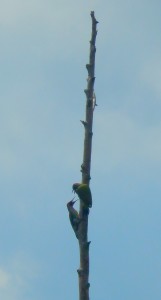
Two Green Woodpeckers, presumably a parent and a newly-fledged juvenile, were clinging to a dead tree, the parent a little higher up, the youngster apparently begging for food with open beak. The family drama went on for several minutes.
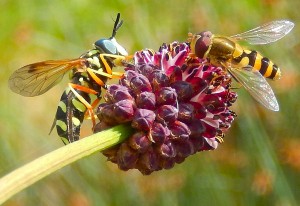
Tiny wildlife shows were visible on the flowers: here, two hoverflies of different species, busy being Batesian mimics of dangerously stinging wasps (but harmless as doves) are feeding, slow and relaxed in the sunshine, on the small flowers in a Great Burnet’s flowerhead. They didn’t seem at all bothered by each other, or by any risk from predators. But despite their glorious colours, it was duckling day today.
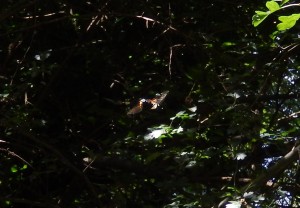
An English Summer is, as the saying goes, three fine days and a thunderstorm. Or, going out with sunhat, suncream, sunglasses… and a pullover and raincoat, just in case. Today it started out cold with a chill north-north-easterly wind, but quietened down and became rather too hot to work comfortably.
A tree had fallen across the glade in the Gunnersbury Triangle where the beekeeper is going to station one of her hives. I soon threw off my pullover, and my rainproof jacket never left my rucksack. The soft willow wood was no trouble to saw up, and I dragged the branches to the dead-hedge without much effort. A lot of small holm oak, an invasive alien species from the Mediterranean (think Ligurian coast) has sprung up from old stumps, so they joined the pile. A Blackcap sang to me while I worked.
The butterfly transect revealed very little, though some Commas are encouragingly laying eggs. As for other insects, several species of hoverfly, from tiny and slender to large wasp mimics and a fine one largely black, perhaps a bee mimic, were active. They hover, perch and sunbathe, or dash and chase each other (specially the large black ones) aggressively. I had fun trying to photograph one actually in the air, you can see the atmospheric but not very useful result above. It does give something of an idea how much they whiz and dash about, hovering always on the qui vive.
Ragwort is getting more and more abundant on the reserve; today, Helen spotted some tiny (probably first instar) Cinnabar Moth caterpillars on one of the plants; an adult visited me while I worked.
The Peacock Butterfly caterpillars of last week seem all to have pupated in hiding somewhere; there are quite a few younger ones still on the stinging nettles, so there will be at least two lots of adults.
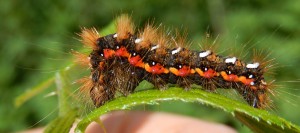
We found a Knot Grass moth caterpillar (a Noctuid moth) on a bramble. It is hairy and aposematic, with brown hair but without the four long brown ‘shaving brush’ tufts of the Vapourer moth caterpillar (a Lymantriid or Tussock moth), which we’ve also found here.
But perhaps the insect I was happiest to see was this young Bush Cricket, resting on a flower for no particular reason, and taking a risk as its fine spotted green camouflage was totally compromised by its white and yellow flowery background. It must be the first one I’ve seen this year.
I have always loved natural patterns. The bark of this Aspen tree looks almost as if it encodes symbols in some cuneiform notation.

Today dawned foggy and cool, but the sun soon burnt its way through and it became a hot spring day. I spent most of it reroofing the tool shed at the Gunnersbury Triangle nature reserve. It was in tatters after at least one hard winter, and it was an interesting exercise peeling off the layers hopefully tacked one on top of the leaky other. I then removed three full boards from the roof, complete with what I’m sure any mycologist would have found a fascinating colony of wet rot fungus, together with several wriggly centipedes and a lot of woodlice.
As it grew hotter on the roof, I was joined by at least two species of hoverfly, one large, dark, and almost unstriped. A brimstone butterfly chased around with a smaller white, perhaps a green-veined or an orange tip. A comma butterfly wandered about. Down below, the stinging nettles, hops, and garlic mustard (ideal for orange tips) are coming up nicely, but there’s too much cow parsley and some volunteers are pulling a lot of it out.
At lunchtime I walked down to the pond. Chiffchaffs were singing all over; the pond was suddenly covered in pond skaters (Gerris) with one or two whirligig beetles. The tadpoles have hatched out into a wriggling mass.
Spring has sprung.